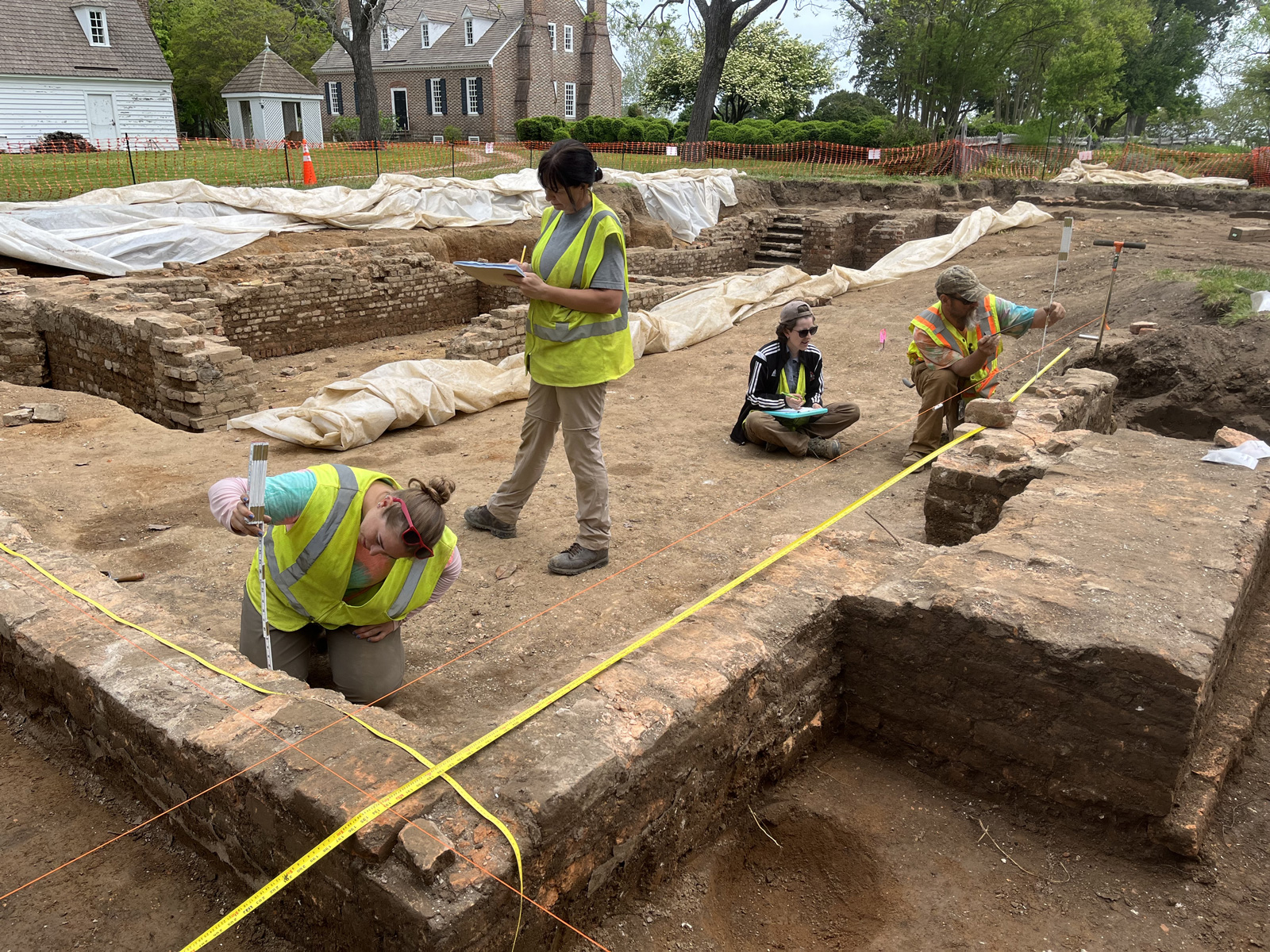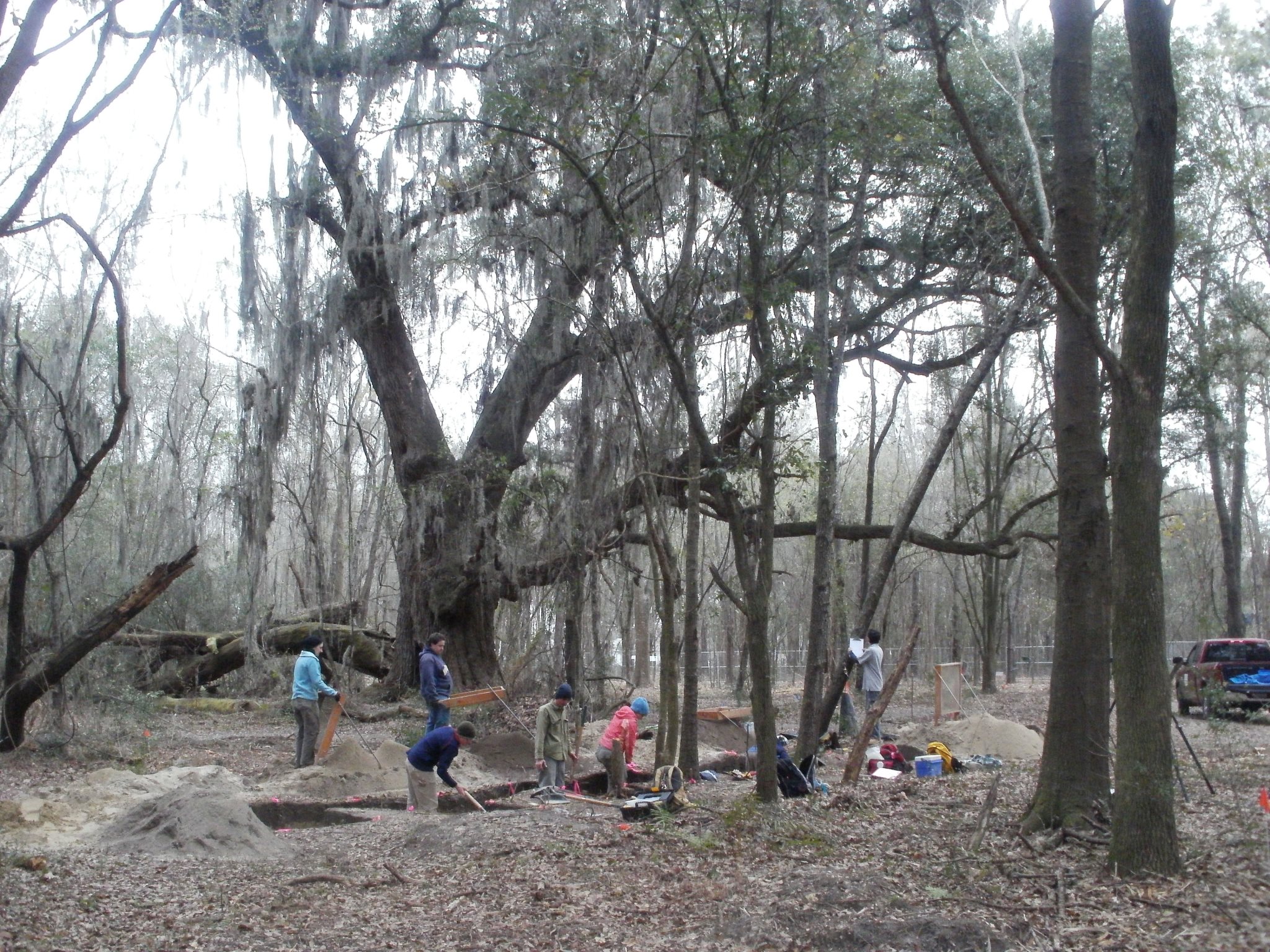Archaeology
New South Associates (NSA) archaeologists are able to identify and study archaeological sites as well as recover data ahead of construction projects, monitor sites, and prepare items for curation.


If you’ve ever found an arrowhead, broken dishes, old foundation, or milldam and wondered “how did this get here?” or “where did it come from?”, then welcome to archaeology!
Archaeology is the study of the human past through analysis of the material objects that people left behind. NSA’s archaeologists have experience with sites spanning the precontact Native American occupation of North America, domestic sites, industrial sites, and military sites.
Archaeological studies are often conducted in phases depending on what level of investigation is required. NSA’s archaeologists are experienced with all phases including identification, testing, excavation and analysis.
Archaeological Services
Reconnaissance
NSA commonly assists with due diligence studies that planners and developers can use to make informed decisions early in project development. Investment at this phase can often provide substantial savings in time and money in the long term by identifying, considering, and even eliminating sensitive areas. These studies typically review existing files, National Register of Historic Places listings, local histories, and historic maps. A reconnaissance may include a site visit to observe the study area’s setting or to gather more detailed information on a building, dam, cemetery, or industrial complex.
Phase I – Identification
Phase I survey is associated with identifying archaeological sites. It typically begins with background research and then proceeds to field studies. In the eastern United States and Caribbean, most archaeological sites are buried. The easiest way to identify them is by excavating small holes (shovel tests) at regular intervals and then screening the dirt to find artifacts. NSA also uses metal detectors on military or historic sites. Each site is reported to the state archaeology office as part of the official record. NSA then prepares a report summarizing the results and recommendations for additional work that might be necessary.
Phase II – NRHP Assessment / Evaluation
Phase II studies are typical when there is a need for detailed information about an archaeological site. This might include formal evaluation of the site for the National Register of Historic Places (NRHP). The amount of fieldwork varies, but often includes intensive shovel testing and larger excavation units. These methods gather additional artifacts for dating and functional analysis and establish the site’s state of preservation. Artifacts collected during fieldwork are processed and analyzed in the laboratory at a more intensive level than at the survey stage, since both the fieldwork and analysis must address the site’s research potential. A report detailing the results of the work is prepared and makes a recommendation on the significance of each site as either eligible or not eligible for the National Register.
Phase III – Data Recovery
Phase III Archaeological Data Recovery excavations are large-scale excavations designed to recover the data a site contains before a project proceeds and the site is lost. Data recovery excavations are the most labor-intensive of the archaeological phases, and as a result, the costliest phase of archaeological compliance. A well-designed sampling strategy is a critical element to a successful project; it recovers the important information contained in a site while minimizing costs. Effective sampling strategies employed by NSA include the use of geophysical survey to identify resource locations and heavy equipment to remove disturbed soils and identify and map cultural features, as well as the use of a variety of cutting-edge analytical techniques to maximize the data gained from artifact analysis.
Laboratory analysis often includes other studies such as the recovery and identification of plant and animal remains for dietary information, the reconstruction of pottery vessels, the calculation of various statistics and indices, and other specialized research protocols. Data recovery reports are very detailed and discuss not only the site under investigation, but also, more importantly, how the information gathered from that site contributes to archaeological research. Public outreach is often a requirement and always a beneficial element of a data recovery project. NSA has designed websites and uses social media to share results with the public.
Site Monitoring
Occasionally, even the best planning is limited by conditions on the ground. For example, active construction, impervious surfaces, or deeply buried sites cannot be reached using standard archaeological survey techniques. In these situations, it is often necessary or desirable to have an archaeologist on-site during the earth moving portions of a project. The archaeologist can then view newly exposed soils to identify sites that were not visible earlier. Effective monitoring occurs when the archaeologist knows the resources of a given area and can assess whether discoveries require further consultation.
Laboratory
All recovered cultural artifacts must be washed, cataloged, analyzed, and prepared for curation. When artifacts arrive at NSA’s laboratory, each artifact is cleaned in the appropriate manner and then sorted for analysis. NSA has developed and maintains database systems for both precontact and historic artifact analysis. These interactive systems allow project archaeologists to analyze, summarize, tabulate, and report project data in a consistent and expedient manner. Artifacts are only kept at NSA until analysis is finished. When the project is completed, the artifacts are submitted to the appropriate federal, state, or private curation facility.

Abercorn Archaeology Project and Public Outreach
New South Associates conducted an archaeological data recovery at Site 9CH1205, an African American enslaved and freed people settlement and portions of a Civil War Union Army camp. A highly successful public outreach program enabled visitors to tour the site during excavation and learn about archaeological research and procedures in a historic preservation context. Over 1,000 people visited the site during three months of fieldwork. A children’s book about the history and archaeology was also produced.
